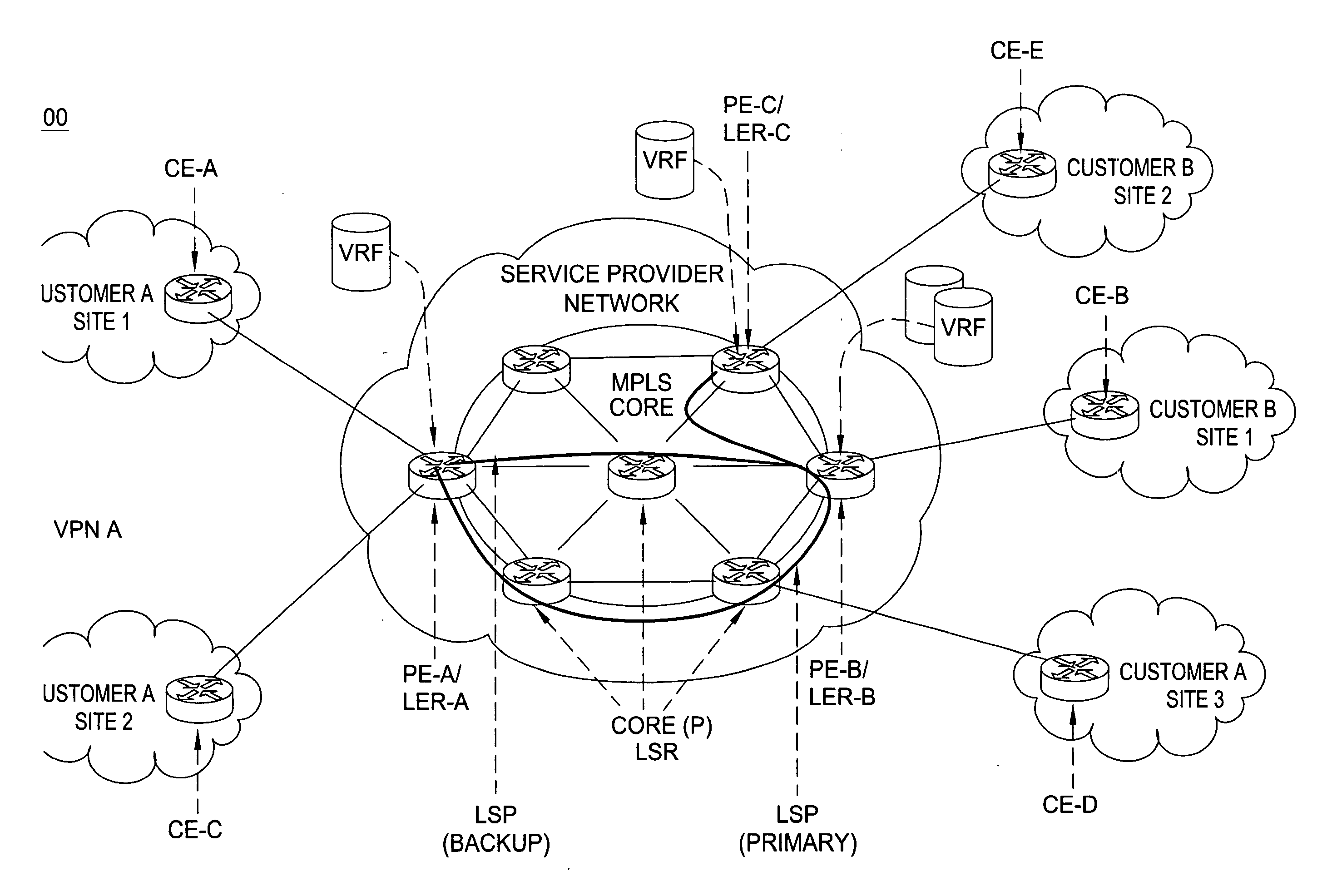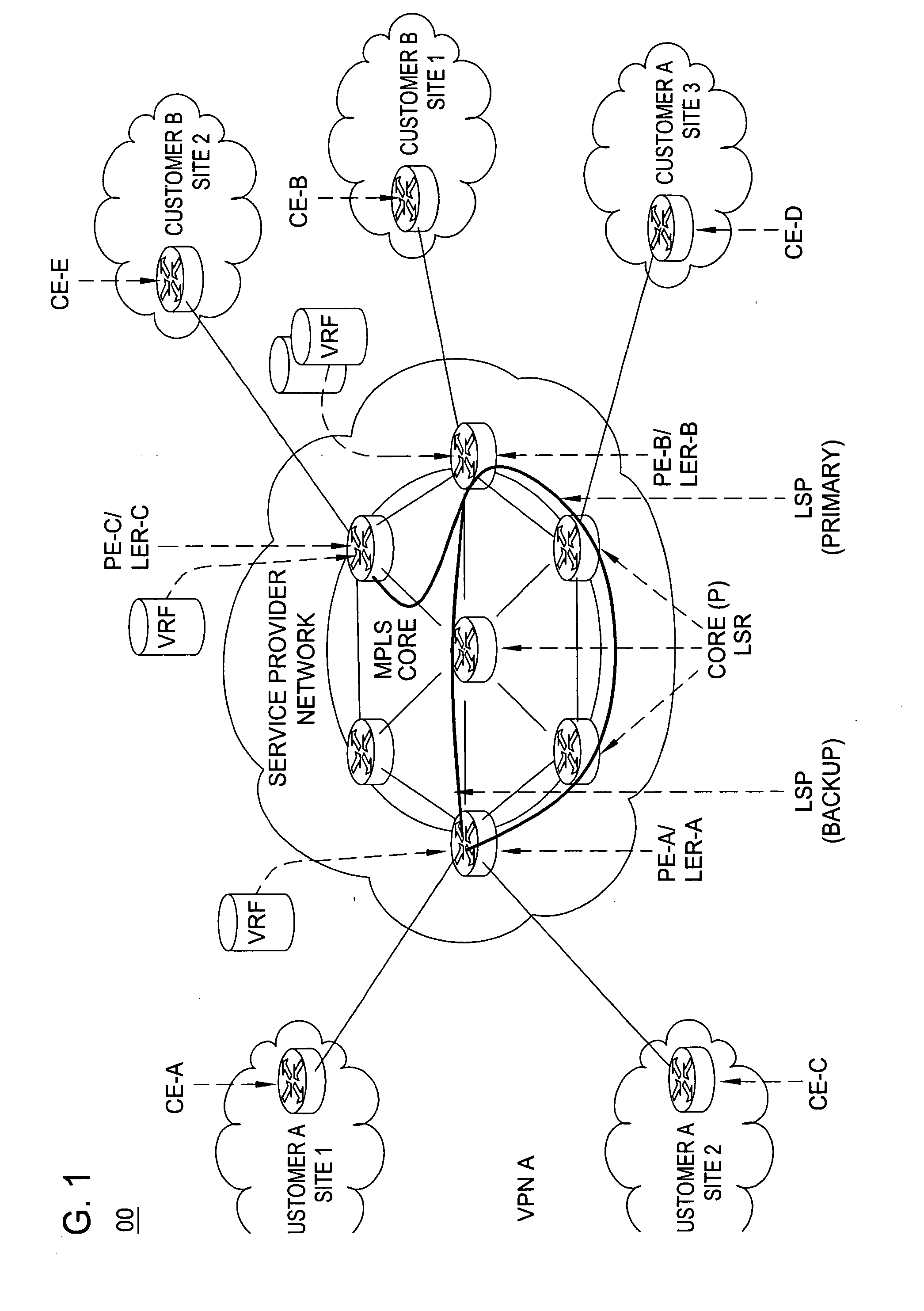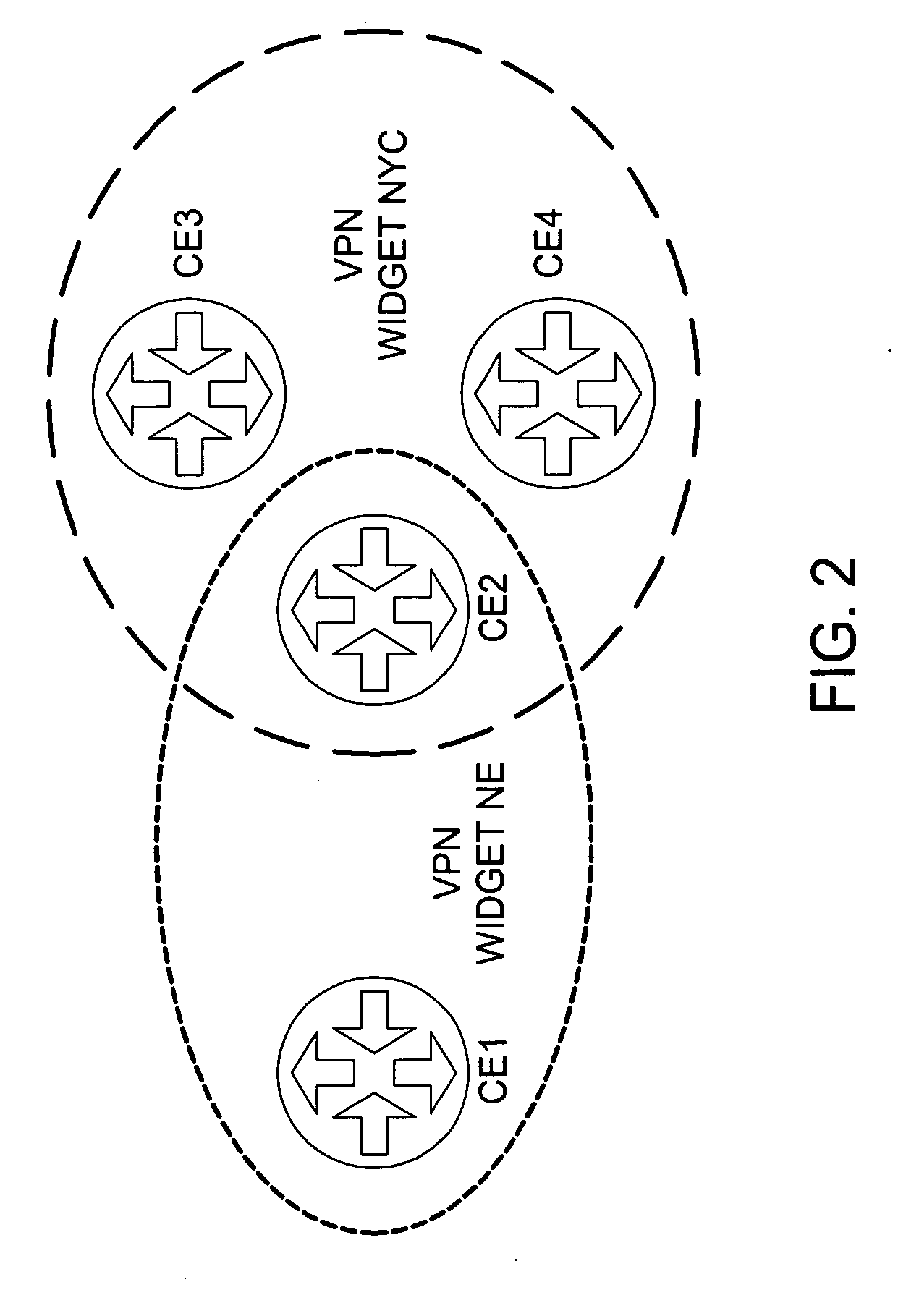Method for optimal assignment of customer edge (CE) routers to virtual private network route forwarding (VRF) tables
a customer edge router and routing table technology, applied in the field of virtual private networks, can solve the problems of affecting the vpn, consuming a lot of resources,
- Summary
- Abstract
- Description
- Claims
- Application Information
AI Technical Summary
Benefits of technology
Problems solved by technology
Method used
Image
Examples
Embodiment Construction
[0023] The present invention advantageously provides a method for optimal assignment of customer edge (CE) routers to virtual private network route forwarding (VRF) tables. Although various embodiments of the present invention are described herein with respect to a Multi-Protocol Label Switching (MPLS) Virtual Private Network (VPN), the specific embodiments of the present invention should not be treated as limiting the scope of the invention.
[0024] It will be appreciated by those skilled in the art and informed by the teachings of the present invention that the concepts of the present invention may be applied in many other network service architectures utilizing VPNs and specifically utilize VRFs or RTs (Routing Tables) to define VPN membership. This can include layer 3 VPNs as described in RFC 2547, and layer 2 VPNs for Virtual Private LAN Service (VPLS). Generally speaking, the invention is applicable to any network architecture in which VRFs or structures similar to VRFs are use...
PUM
 Login to View More
Login to View More Abstract
Description
Claims
Application Information
 Login to View More
Login to View More - R&D
- Intellectual Property
- Life Sciences
- Materials
- Tech Scout
- Unparalleled Data Quality
- Higher Quality Content
- 60% Fewer Hallucinations
Browse by: Latest US Patents, China's latest patents, Technical Efficacy Thesaurus, Application Domain, Technology Topic, Popular Technical Reports.
© 2025 PatSnap. All rights reserved.Legal|Privacy policy|Modern Slavery Act Transparency Statement|Sitemap|About US| Contact US: help@patsnap.com



